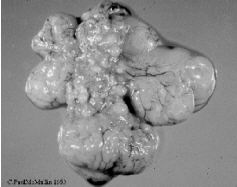



Infectious Bronchitis, IB Egg-layers
Introduction
A Coronavirus infection of chickens, with much antigenic variation. The condition has a morbidity of 10-100% and mortality of 0-1%. Infection is via the conjunctiva or upper respiratory tract. There is rapid spread by contact, fomites or aerosol. A few birds are carriers up to 49 days post infection.
The virus is moderately resistant and may survive 4 weeks in premises. Poor ventilation and high density are predisposing factors.
Signs
- Drop in egg production (20-50%).
- Soft-shelled eggs.
- Rough shells.
- Loss of internal egg quality.
- Coughing, sneezing.
- Rales may or may not be present.
Post-mortem lesions
- Follicles flaccid.
- Yolk in peritoneal cavity (non-specific).
Diagnosis
3-5 passages in CE, HA-, typical lesions, FA. Serology: HI, SN, Elisa, DID. Differentiate from Egg Drop Syndrome, EDS76.
Treatment
Sodium salicylate 1gm/litre (acute phase) where permitted - antibiotics to control secondary colibacillosis (q.v.).
Prevention
Live vaccines of appropriate sero-type and attenuation, although reactions can occur depending on prior immunity, virulence, particle size (if sprayed) and general health status. Maternal immunity provides protection for 2-3 weeks. Humoral immunity appears 10-14 days post vaccination. Local immunity is the first line of defence. Cell-mediated immunity may also be important.
 |
| Figure 22. Flaccid ovarian follicles in a broiler parent chicken undergoing challenge with Infectious Bronchitis virus. |







